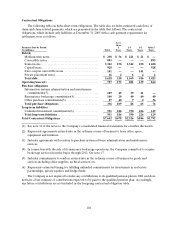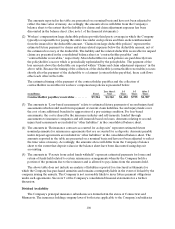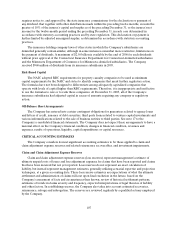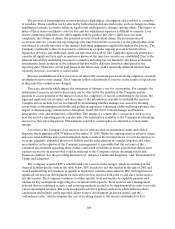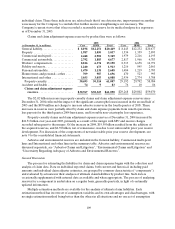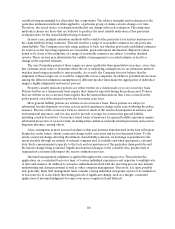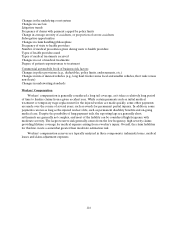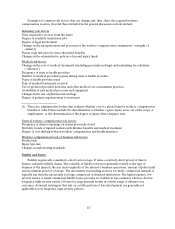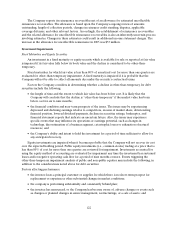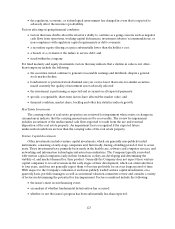Travelers 2005 Annual Report Download - page 125
Download and view the complete annual report
Please find page 125 of the 2005 Travelers annual report below. You can navigate through the pages in the report by either clicking on the pages listed below, or by using the keyword search tool below to find specific information within the annual report.
113
determination that the change should be reflected in the Company’s estimated claim liabilities. The final
estimate selected by management in a reporting period is a function of these detailed analyses of past data,
adjusted to reflect any new actionable information.
Discussionof Product Lines
The following section details reserving considerations and common risk factors by product line . There
are many additional risk factors that may impact ultimate claim costs. Each risk factor presented will have
a different impact on required reserves. Also, risk factors can have offsetting or compounding effects on
required reserves. For example, in workers’ compensation, the use of expensive medical procedures that
result in medical cost inflation may enable workers to return to work faster, thereby loweringindemnity
costs. Thus, in almost all cases, it is impossible to discretely measure the effect of a single risk factor and
construct a meaningful sensitivity expectation.
General Liability
General liability is generally considered a long tail line, as it takes a relatively long period of time to
finalize and settle claims from a given accident year. The speed of claim reporting and claim settlement is a
function of the specific coverage provided, the jurisdiction and specific policy provisions such as self-
insured retentions. There are numerous components underlying the general liability product line. Some of
these have relatively moderate payment patterns (withmost of the claims for a given accident year closed
within 5 to 7 years), while others can have extreme lags in both reporting and payment of claims (e.g., a
reporting lag of a decade for “construction defect” claims).
While the majority of general liability coverages are written on an “occurrence basis,” certain general
liability coverages (such as those covering directors and officers or professional liability) are typically
insured on a “claims-made” basis.
General liability reserves are generally analyzed as two components: primary and excess/umbrella,
with the primary component generally analyzed separately for bodily injury and property damage. Bodily
injury liability payments reimburse the claimant for damages pertaining to physical injury as a result of the
policyholder’s legal obligation arising from non-intentional acts such as negligence, subject to the
insurance policy provisions. In some cases the damages can include future wage loss (which is a function of
future earnings power and wage inflation)and future medical treatment costs. Property damage liability
payments result from damages to the claimant’s private property arising from the policyholder’s legal
obligation for non-intentional acts. In most cases, property damage losses are a function of costs as of the
loss date, or soon thereafter. In addition, sizable or unique exposures are reviewed separately, such as
asbestos, environmental, other mass torts, construction defect, medical malpractice and large unique
accounts that would otherwise distort the analysis. These unique categories often require a very high
degree of judgment and require reserve analyses that do not rely on traditional actuarial methods.
Defense costs are also a part of the insured costs covered by liability policies and can be significant,
sometimes greater than the cost of the actual paid claims. For some products this risk is mitigated by policy
language such that the insured portion of defense costs erodes the amount of policy limit available to pay
the claim. Such “defense withinthe limits” policies are most common for “claims made” products. When
defense costs are outside of the limits, amounts paid do not erode the policy limits.
This line is typically the largest source of reserve estimate uncertainty in the United States (excluding
assumed reinsurance contracts covering the same risk). Major contributors to this reserve estimate
uncertainty include the reporting lag (i.e., the lengthof time between the event triggering coverage and the
actual reporting of the claim), the number of parties involved in the underlying tort action, whether the
“event” triggering coverage is confined to only one time period or is spread over multiple time periods, the
potential dollars involved (in the individual claim actions), whether such claims were reasonably



